For the second Slow Art Day hosted by the Katonah Museum of Art (KMA), the museum focused on its Bisa Butler: Portraits exhibit. Renowned for her use of fabric and traditional quilting techniques, Butler reimagines historical black figures and culture in her art, often taking classic photos and turning them into vibrant, multi-colored textiles.
On April 4, 2020, detailed images from one of Butler’s amazing quilts titled ‘I Know Why the Caged Bird Sings’ were shared to Facebook and Instagram.
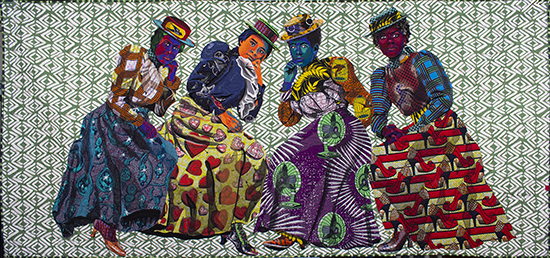
We show the full image first (above), but the museum did not include it in their initial posts. Instead, they posted four close-up images (below), captioned with short prompts to encourage deep reflection. Participants were then invited to an in-depth Zoom discussion, led by Marijane, a KMA docent, to explore the whole exhibit and slowly look at some of Butler’s amazing work.
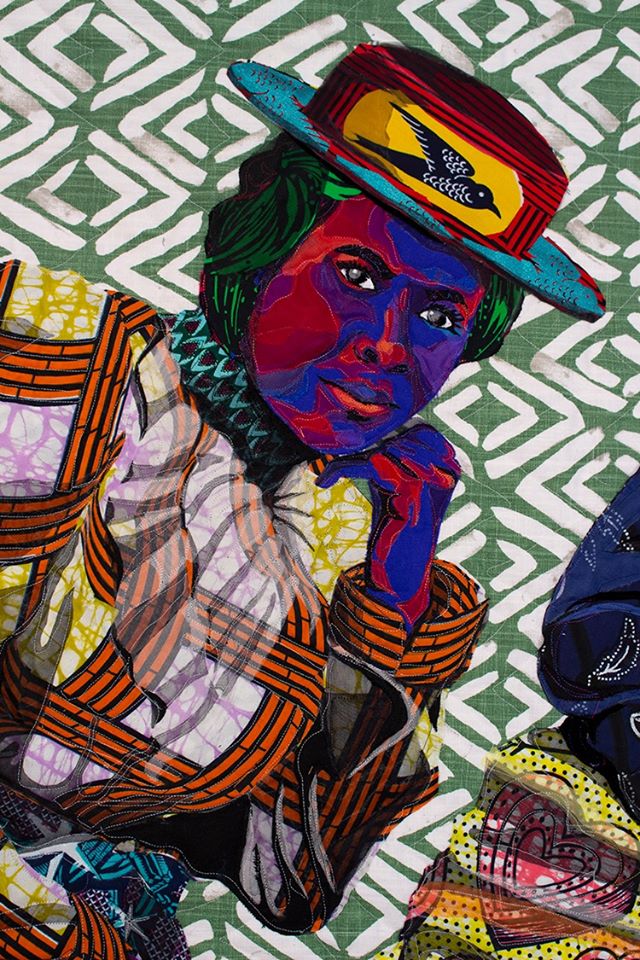
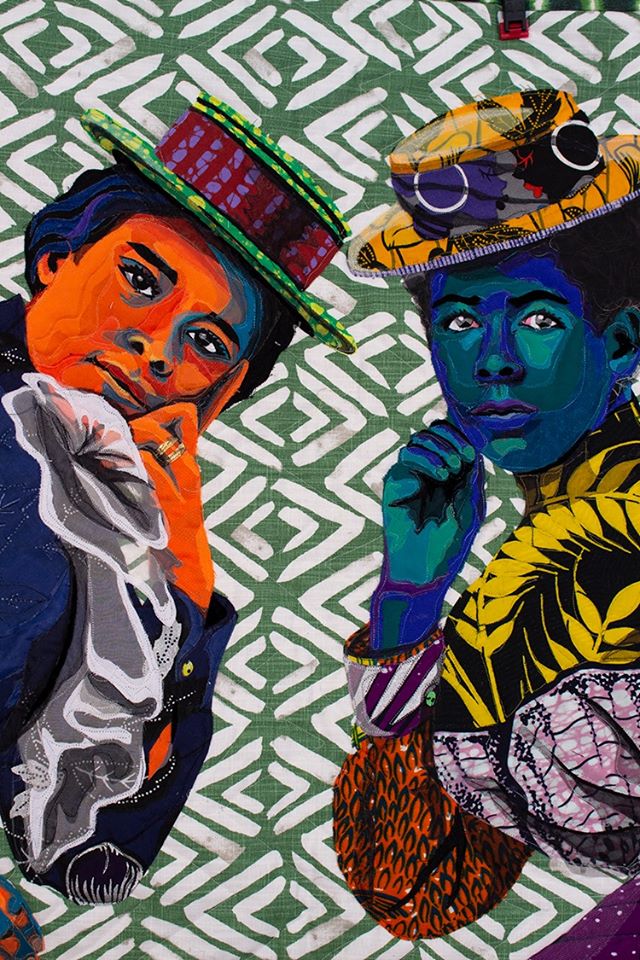
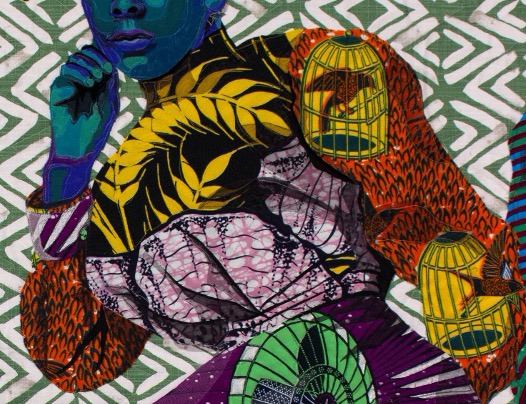
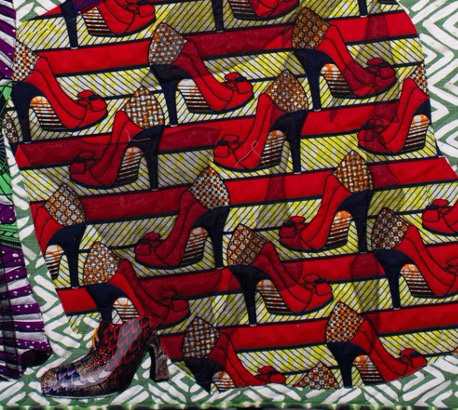
Butler’s stunning textiles are often based on important black and white photographs – the one above of four women sitting on the steps of Atlanta College in 1900.
This particular work engages with complex ideas – ranging from change, power and freedom, to historical symbols of wealth culture – through Butler’s carefully curated patterns and colors. Of course, the title of this work borrows from the title of Nobel-Prize winning poet and writer Maya Angelou’s debut memoir in 1969.
The event was very well received across social media and Zoom. Many participants followed up the event with positive feedback such as:
Thanks for the incredible up close views!
Such a wonderful tour. Thanks so much for making my day.
This was AMAZING!! Thank you so much for hosting slow art day and for hosting it virtually!!!!
PARTICIPANT QUOTES
At Slow Art Day HQ, we also love Butler’s art and her powerful textiles. These are amazing to slowly look at online and we can only imagine what they are like to see hanging on the museum’s walls. The museum is currently closed due to the Covid-19 pandemic, but when the KMA re-opens, we recommend you go if you are near northern Westchester County, New York.
Finally, we note that over 80% of artists from collections across 18 major U.S. museums are still both male and white according to a 2019 survey by PLoS ONE; we are grateful that the KMA is helping to change that.
– Johanna and Ashley
